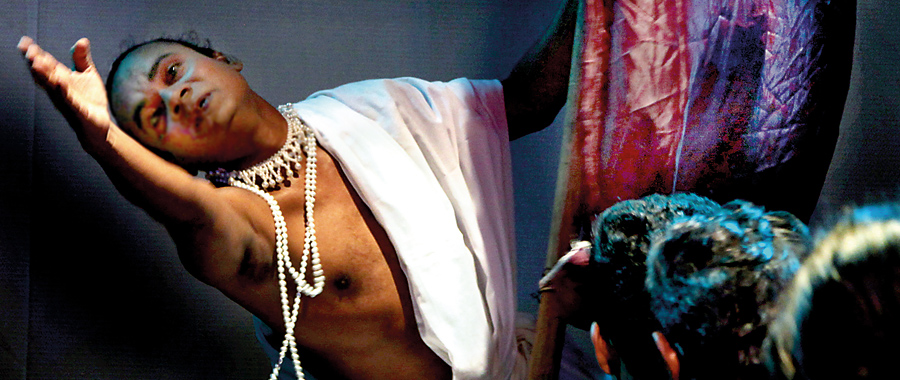Bringing folklore to life
Sapta NAARI, a modern interpretation of seven legendary tales and characters of local folklore will return to the stage next weekend at the Punchi Theatre. Directed by Prof. Asoka de Zoysa and choreographed by Nilan Maligapse of Arpeggio, this second instalment of the show is all set to be even bigger, bolder and braver than the original version staged in May.

Pix by Susantha Liyanawatte and M.A. Pushpa Kumara
Local folklore brings out the larger than life characters of Sanda Kinduri, Sokari, Lenchina, Nonchi Akka, Ahelapola Kumarihami, Yasodhara and Maname Kumariya. Their portrayal varies, with the Ahelapola Kumarihami and Yasodhara as the most pure of women and paragons for modesty while Sokari and Lenchina are openly sexual and wanton, making eyes at the audience and engaging in all manner of indiscretions. “This was mainstream entertainment a few centuries ago,” says Prof. Asoka who co-scripted the production. “Our research into the archives of Sinhala theatre led the way to texts which have seldom been recited or sung. The words are simple and the tunes very catchy.”
Many of these melodies have been lost but Prof. Asoka and his team were able to dig up some which have been handed down over generations from teacher to pupil and father to son. There were many revelations along the way, says Prof. Asoka. “The many disappointments of not being able to arrive at the ‘original melody’, and often being confronted with variations of the same melody confirmed the theory that traditions are invented,” he says.
“Similarly characters like Sanda Kinduri and Maname Kumariya have inspired artistes to recreate them in the 50s and 60s in the mould of modern Sinhala drama and oriental ballet.” Was Sarachchandra retelling the Jataka when he created Maname in 1956, enacting once more the story of the unfaithful wife for the urban intellectual audience? Or was he inspired by new narrations, at a time when women were given the opportunity to follow courses at the universities of Ceylon? The very modern version
of a song from Sarachchandra may give you the clue, says the director.
The production also features a spectacular score to complement the medley of dance and theatre on stage. “Many choreographers in the contemporary dance scene seem to think that the music should not distract the audience” so working with choreographer Nilan Maligapse was a refreshing-and relieving-breath of fresh air, smiles Dr. Asoka. “The choreography for Sapta NAARI to a large extent was inspired by melodies hidden in the theatre archives, performedlive to the accompaniment of instruments of the past times.”
Over the last few months a team of young researchers in dance and music have been experimenting with forms of traditional-and often religious-dance. Watch the fruits of their labour unfold on stage at the Punchi Theatre on August 24 and 25 at 5pm and 6.45pm respectively. Tickets are available at the Goethe Institute and at the gate.
Bringing folklore to lifeThe second instalment Sapta NAARI promises to be bolder than the firstMirror
Follow @timesonlinelk
comments powered by Disqus


